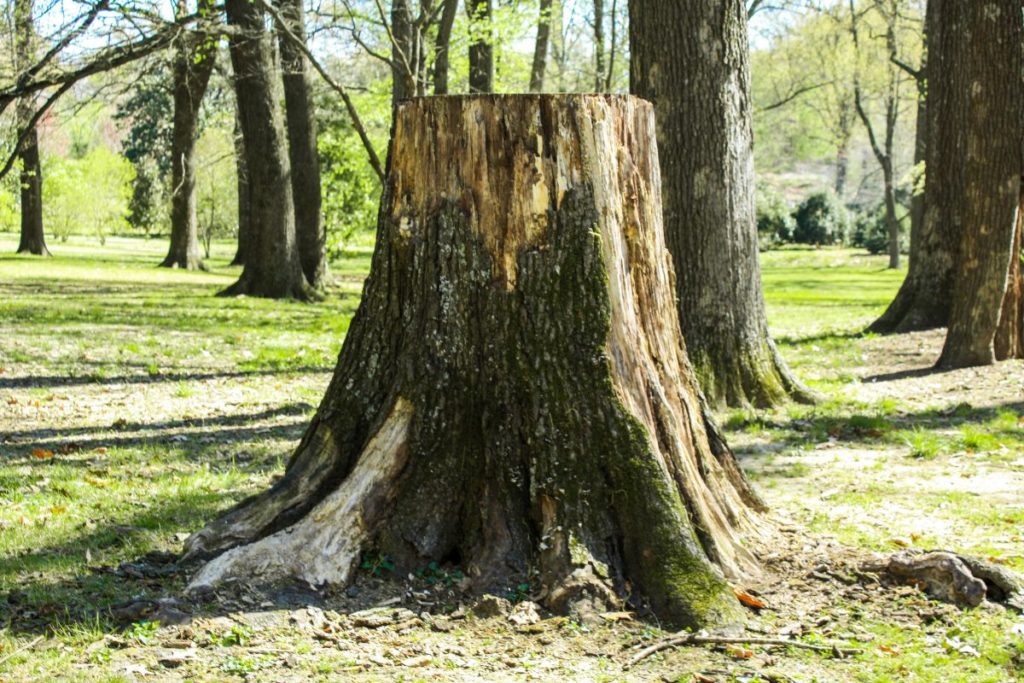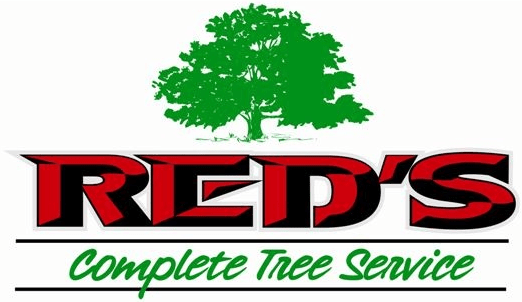You may not think it to look at them, but trees actually have quite a bit in common with us! They need food and nutrients, which they receive in the form of sunlight, water, carbon dioxide, and the soil around them. Just like humans, this nourishment allows them to grow strong and healthy. Unfortunately, trees are like us in another way—they too can experience illness and death.
The trouble is, it’s much more difficult to spot when a tree is sick or dying. You or I may run a fever, cough, or sneeze when we’re under the weather, but unless you’re an expert on trees, it can be hard to tell if they’re in poor health. There are still symptoms you can learn to spot, however! When you’re armed with this knowledge, you’ll be better able to gauge how your trees are feeling. This will help you know when it’s time to call in the pros with Red’s Tree Service.
How to examine your trees
You don’t need to be a doctor to examine your trees! You can get a good idea of how healthy they are by periodically checking the trunks, branches, foliage, and above-ground roots. You’ll be looking for anything that doesn’t seem right, as this could be a sign of deterioration. We’ll outline what to look for in the most important areas below.
Trunk and bark
The bark is a tree’s first line of defense, just like our skin is. If it shows any signs of damage, the tree could be decaying below the surface. Vertical cracks can be one indication of poor health. A lack of new bark is another. As trees age, the outer layer of their bark falls off and is replaced with a fresh layer. If a tree’s health is declining, however, it won’t be able to replace the stripped layer. Fungal growth is one more thing to look for when inspecting your trees. Large clusters of growth can be a sign that the tree is suffering from internal rot.
In general, trees showing signs of decay or instability should be removed as soon as possible to prevent them from falling and possibly causing damage. As experienced arborists, we can help you decide whether or not a tree should be removed. We also have the professional skills and equipment to safely and efficiently remove trees from your property if needed.
Roots
Discerning the health of a tree from the roots can be difficult since most of them are hidden underground. The good news is, roots are the least vulnerable part of the tree. Under the surface, they’re protected from winds, wandering animals, and other dangers the more visible parts of the tree are subject to.
They can still experience illness, though! Nearby construction, soil compaction, and other stressors can lead to damage you may not be aware of. One visible sign of this is small branches sprouting from the base of the tree. Roots that have been broken off, injured, or damaged are another.
If you’re not sure what you should be looking for, our team is happy to help! A tree health and risk assessment by Red’s Tree Service can help you spot any weaknesses in the roots before they become major problems, saving you time and money.
Branches and twigs
Branches and twigs can give you some insight into how well or how poorly a tree is doing! A healthy tree will boast plenty of new leaves or buds, have a normal leaf size, and show signs of twig growth, among others.
In fact, you can check a tree’s condition by removing a small twig from a branch, breaking it open, and checking the color inside. If the color is bright green, chances are good that everything’s fine. A duller green could be a sign of aging. Black or brown could signify serious damage or even death.

What to do if a tree is showing signs of illness
If you believe your tree is deteriorating, the first thing you should do is identify what the underlying problem is. There are several possible reasons for a tree to be in poor health. It may be receiving too much or too little water. It could be suffering due to soil compaction or recent excavations nearby. It may require pruning or fertilizer. It can be hard to know where to start to find the source of sickness!
A professional will have the training and knowledge to identify and diagnose the root of the problem. Here at Red’s Tree Service, we have many years of experience in multiple aspects of the tree business, allowing us to offer you a wide variety of services. It will be much easier to find a solution for your sick tree with an expert arborist on your side!
Keep your trees healthy and your property safe with Red’s Tree Service
Trees come with significant benefits to our properties and our lives, but when they become ill or die, they can be a real liability. While it’s smart to brush up on what to look for when it comes to the health of your trees, a tree health and risk assessment by Red’s Tree Service can help you spot any weaknesses before they become major problems! This can save you a great deal of time and money in the long run.
It may save your tree, too! Understanding and addressing the risks associated with your trees is important, and a team of professional arborists can help you do just that. If you’re looking to keep your trees in good shape, get in touch today and let our team here at Red’s Tree Service ensure they live a long and healthy life.
